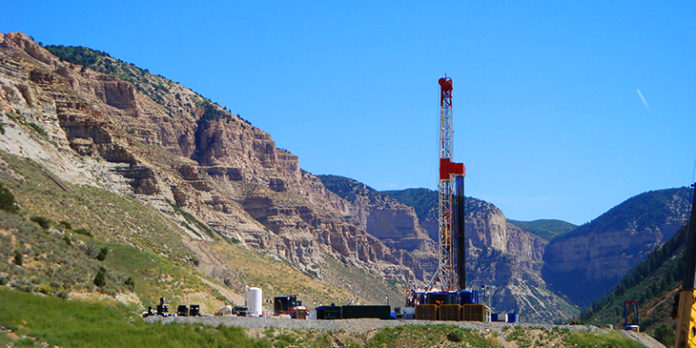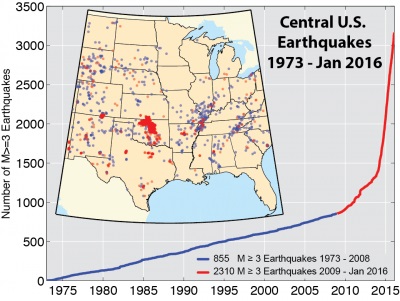
The study shows that fracking wastewater injections push water down thousands of meters, creating intense pressure on fault lines and leading to man-made earthquakes.
For years, scientists and other have speculated that the spike in earthquakes in Oklahoma was linked to natural gas extraction via the controversial method of hydraulic fracturing. Hydraulic fracturing, more commonly known as “fracking”, is hugely controversial due to its permanent destruction of groundwater and drinking water as well as its use of cancerous chemicals that often leak into rivers and streams. Yet, it seems that an increase in earthquakes is also another unpleasant side effect of fracking.

From 1975 to 2008, the US Geological Survey measured, on average, 1 to 3 earthquakes annually in Oklahoma. Once the current fracking boom began in 2009, that number spiked to an average 40 earthquakes annually from 2009 to 2013 and they’ve been worsening since. In 2014, Oklahoma experienced over 580 earthquakes of 3.0 magnitude or greater. Thankfully, a new study has put any doubt to rest, once and for all proving that this dangerous spike in earthquakes is a direct result of widespread fracking.
The new study, published in Science, used Interferometric Synthetic Aperture Radar (InSAR) to show that wastewater injection during the fracking process pushes groundwater up to thousands of feet further down into the Earth. This causes a build-up of enormous pressure, which is ultimately relieved when this displaced water hits a fault line, resulting in a man-made earthquake.
The study also showed that fracking causes uplift, a process by which the surface of the ground around a fracking well rises around the drilling site for up to 5 miles. Uplifting can be seen from space and the researchers used satellite imagery to quantify the uplift effect that fracking causes. Of greater concern, perhaps, was the fact that seismic activity increased even when inject rates at fracking wells declines due to damage caused by higher injection rates. This essentially means that the worst of the damage caused by fracking has already been done. Even if all fracking in Oklahoma stopped tomorrow, the earthquakes would continue to increase.
Though most people, upon reading the study’s results, would decide that the practice simply is not worth the risk, the study’s lead author, Manoochehr Shirzaei, actually suggested that the study could be used to help oil and gas companies find “safer” places to inject their wastewater. Shirzaei said that ultimately the study was done to show energy companies that predictive measures could be used “to make the injections safer and to minimize the number of earthquakes.” Though using the tools from the study may help reduce the number of future earthquakes when new fracking wells are made, there is no way a change of location can make wastewater injections safer.
Wastewater injections are so toxic the US public isn’t even allowed to know what’s in them as oil and gas companies have lobbied the government extensively to avoid disclosing the complete content of fracking injection fluid. A study published in Toxicology and Applied Pharmacology showed that fracking wastewater causes cancer. Another study published in Human and Ecological Risk Assessment found that 25% of disclosed fracking chemicals cause cancer, while 40-50% negatively affected the nervous and immune systems. No matter what the industry or industry-supporting scientists think, the overwhelming scientific evidence and common sense show that there is no such thing as a “safe” way to frack.
What are your thoughts on this? Please share, like, and comment on this article!
This article (New Study Blames Fracking For Spike In Oklahoma Earthquakes) is free and open source. You have permission to republish this article under a Creative Commons license with attribution to the author and TrueActivist.com




